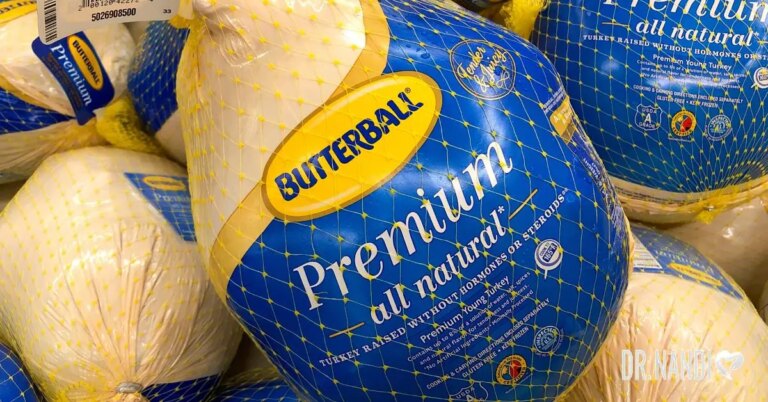Are insects persistently invading your living space? Before resorting to chemicals or store-bought repellants, why not turn to a natural alternative — peppermint? Many insects loathe peppermint’s scent, and research attests to its effectiveness against numerous pests. Here’s how to utilize peppermint to craft homemade insect repellents and maintain a bug-free environment.
The Potency of Peppermint
Peppermint oil is derived from the peppermint plant — a cross between water mint and spearmint — that thrives in Europe and North America. Its refreshing scent and cooling properties of peppermint aren’t just for your enjoyment; they also possess incredible powers to repel and deter pests.
Peppermint is not only a natural irritant to many insects, but some bugs, such as stick insects, even exude a peppermint-like aroma to fend off predators.[1] Its potency extends to repelling a broad range of pests, including:
- Beetles
- Caterpillars
- Fleas
- Flies
- Lice
- Mice
- Moths
- Roaches
The Science Behind Peppermint’s Effectiveness
A study conducted by Auburn University researchers in 2001 explored mint oil’s effects on common roach species: American and German roaches. The results were promising, with mint oil repelling 100% of the roaches throughout the 14-day trial. [2]
Furthermore, studies have indicated that peppermint oil can protect against mosquito bites for up to 150 minutes when applied topically. [3]

The Dangers of Conventional Insect Repellants
Most commercial insect repellents contain DEET (N,N-diethyl-meta-toluamide), a chemical linked to memory loss and behavioral changes in rats after prolonged exposure. The Centers for Disease Control and Prevention (CDC) cites four human deaths directly related to DEET ingestion and five deaths associated with skin exposure. [4]
Opting for natural alternatives like peppermint allows you to repel insects effectively without exposing yourself or your family to potentially harmful substances.
How to Use Peppermint Oil for Pest Control
For those battling pests such as spiders, ants, mosquitoes, and other insects, consider using 100-percent pure peppermint oil, available at your local health or grocery store. Follow these tips to optimize peppermint’s pest-repelling capabilities:
- Apply peppermint oil to a cotton ball and position it in areas with frequent insect sightings, like window sills or doorways.
- Create a peppermint spray by combining 5 to 10 drops of essential oil with each ounce of hot water in a spray bottle. Spray this mixture on various surfaces — countertops, furniture, curtains, blinds, and other hard-to-reach places. Remember to test in a discreet spot first to ensure the oil doesn’t damage the items you’re spraying.
- You can also use the mixture outdoors. Apply it directly to your skin, but test on a small skin patch first, as it may cause irritation to those with sensitive skin.
DIY Peppermint Insect Repellent Recipe
Ingredients:
- 10 drops of peppermint essential oil
- 16 oz. of water
Instructions:
1. Combine 10 drops of peppermint essential oil with 16 oz. of water.
2. Pour the mixture into a spray bottle.
3. Spray on surfaces where insects tend to gather.

Prioritizing Safety When Using Peppermint Oil
Although peppermint oil is a popular and effective natural solution for indoor pest control, it’s crucial to consider safety, especially if pets live in your home. While safe for most humans, peppermint oil can pose risks to pets, especially cats and dogs.
Cats are notably sensitive to essential oils due to their unique liver metabolism, which heightens their susceptibility to oil toxicity. Prolonged exposure or ingestion of peppermint oil may result in adverse reactions such as vomiting, diarrhea, drooling, lethargy, and, in severe cases, tremors or seizures. Dogs, while less sensitive than cats, can exhibit similar symptoms when exposed to high peppermint oil concentrations.
To ensure the safe use of peppermint oil for indoor pest control, adopt these precautions:
1. Dilute the oil: Always blend peppermint oil with water or a carrier oil before using it as an insect repellent. A typical guideline is mixing 10-15 drops of peppermint oil with 1 cup of water or carrier oil, reducing the risk of pet-related adverse effects.
2. Use judiciously: Avoid excessive spraying of the diluted peppermint oil solution, especially in areas where your pets often play, sleep, or eat. Focus on specific areas where pests typically gather, like near doors, windows, and corners.
3. Store securely: Keep peppermint oil and mixtures containing it out of pets’ reach. Ensure that containers are tightly sealed to prevent accidental ingestion or exposure.
4. Monitor your pets: Watch your pets closely for any signs of adverse reactions after using peppermint oil for bug control. Should you observe any unusual symptoms or behaviors, discontinue use immediately and consult your veterinarian.
While peppermint oil can be a powerful and natural tool for indoor bug control, it’s essential to balance its benefits against the safety of your pets. By taking the necessary precautions, you can effectively keep your home free from pests without posing a potential hazard to your furry companions. The journey to a bug-free and chemical-free home needn’t be challenging; it can be as simple as harnessing the power of nature, as embodied by peppermint.

Embrace a Healthier Lifestyle With Our Free Toxic Ingredient Guide
As part of our unwavering dedication to fostering healthier and safer lifestyles, we are offering a free guide on commonly overlooked toxic ingredients. These potentially harmful substances lurk in various aspects of your life — your living environment, the food you consume, and even the skincare products you apply.
This invaluable information is a stepping stone towards comprehending the harmful elements that surround us and equipping you to make more conscious decisions.
In addition to reducing your exposure to toxins, we recommend embracing a holistic wellness strategy for optimal health. This approach involves integrating beneficial whole foods into your diet, maintaining a regular exercise routine, and incorporating our Core Essentials into your daily regimen. By harmonizing these elements, you can enjoy a balanced and vibrant lifestyle, promoting your well-being from the inside out. Let’s make every step count towards a healthier, toxin-free life!

Sources:
- Jones, B.R., Bulbert, M.W. Directed chemical spray of the peppermint stick insect (Megacrania batesii) is induced when predation risk is at its highest. J Ethol 38, 51–59 (2020). https://doi.org/10.1007/s10164-019-00619-0
- Appel, Arthur & Gehret, M.J. & Tanley, Marla. (2001). Repellency and toxicity of mint oil to American and German cockroaches (Dictyoptera: Blattidae and Blattellidae). Journal of Agricultural and Urban Entomology. 18. 149-156.
- Zhang QH, Schneidmiller RG, Hoover DR. Essential oils and their compositions as spatial repellents for pestiferous social wasps. Pest Manag Sci. 2013;69(4):542-552. doi:10.1002/ps.3411
- Toxicological Profile for DEET (N,N-Diethyl-Meta-Toluamide) – Centers for Disease Control and Prevention




















